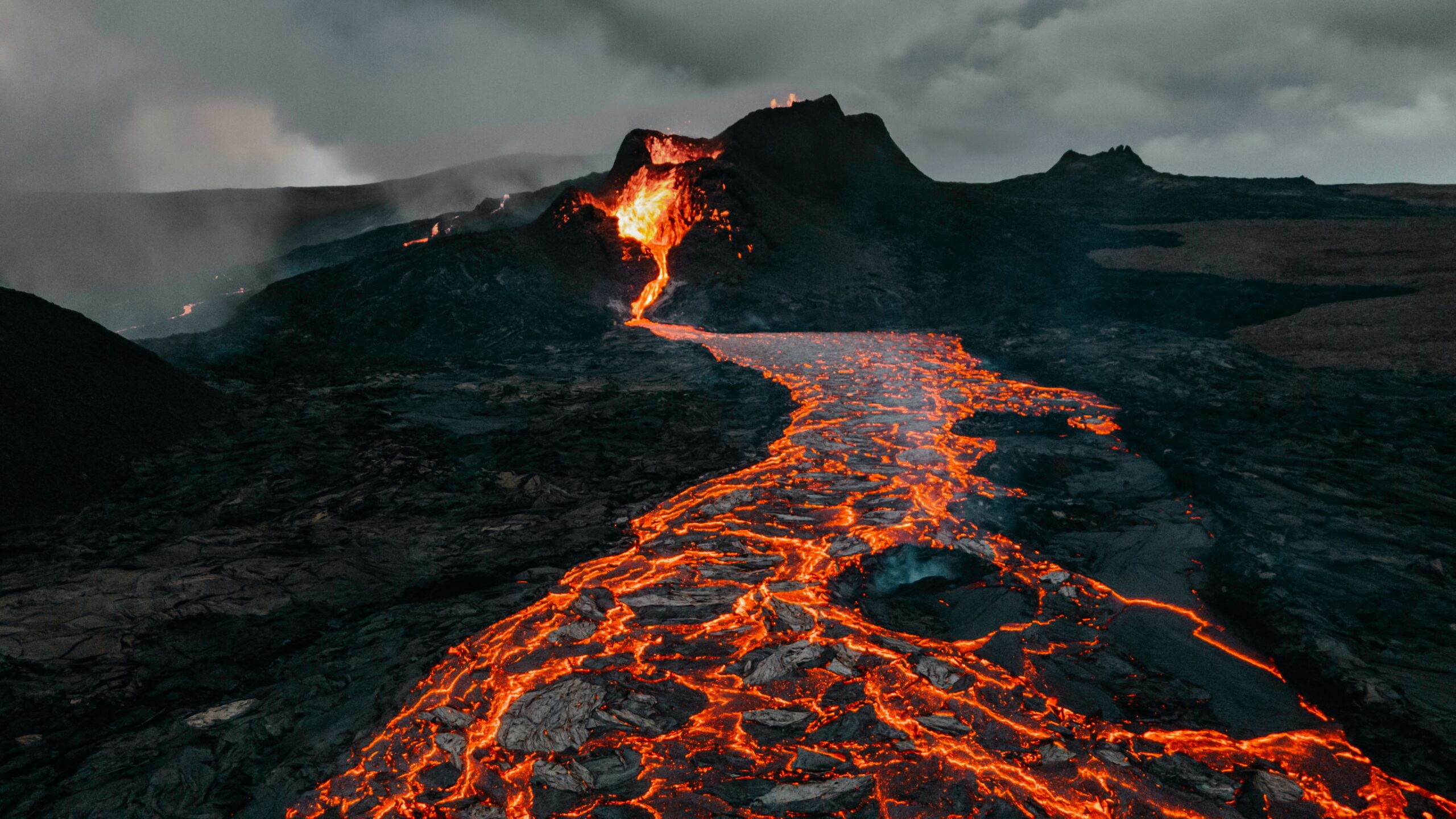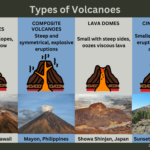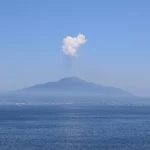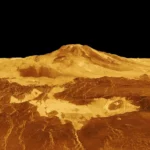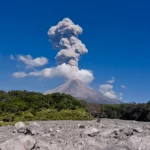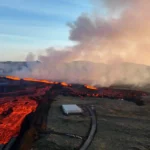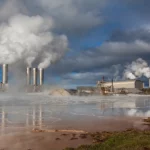Welcome young explorers! Are you ready to embark on an exciting journey deep into the heart of Earth? In this captivating article, we will dive into the fascinating world of volcanoes, uncovering their mesmerizing parts, and exploring the incredible forces that shape our planet. So, grab your magnifying glasses and join me as we discover the amazing parts of a volcano: a fun guide designed especially for curious kids like you! Get ready to be amazed by the Introduction The Three Classic Types of Volcanoes Different Parts of a Volcano and 5 Interesting Facts about Volcanoes for Kids.
Introduction
Hey there, kids! Are you ready to embark on an exciting journey to discover the amazing parts of a volcano? Well, get ready for some fiery fun because we’re about to dive into the fascinating world of volcanic wonders! Volcanoes may seem scary, but trust me, they are a marvel of nature that we can explore and understand. So, let’s put on our explorers’ hats, grab our magnifying glasses, and get ready to learn about the different parts of a volcano!
So, what exactly is a volcano? Picture this – imagine a gigantic mountain with a fiery secret hiding deep inside. It’s like a magic mountain that can erupt with incredible power and create breathtaking scenes. Volcanoes are openings in the Earth’s crust, and they have incredible stories to tell. But before we head into the heart of the volcano, let’s start at the beginning.
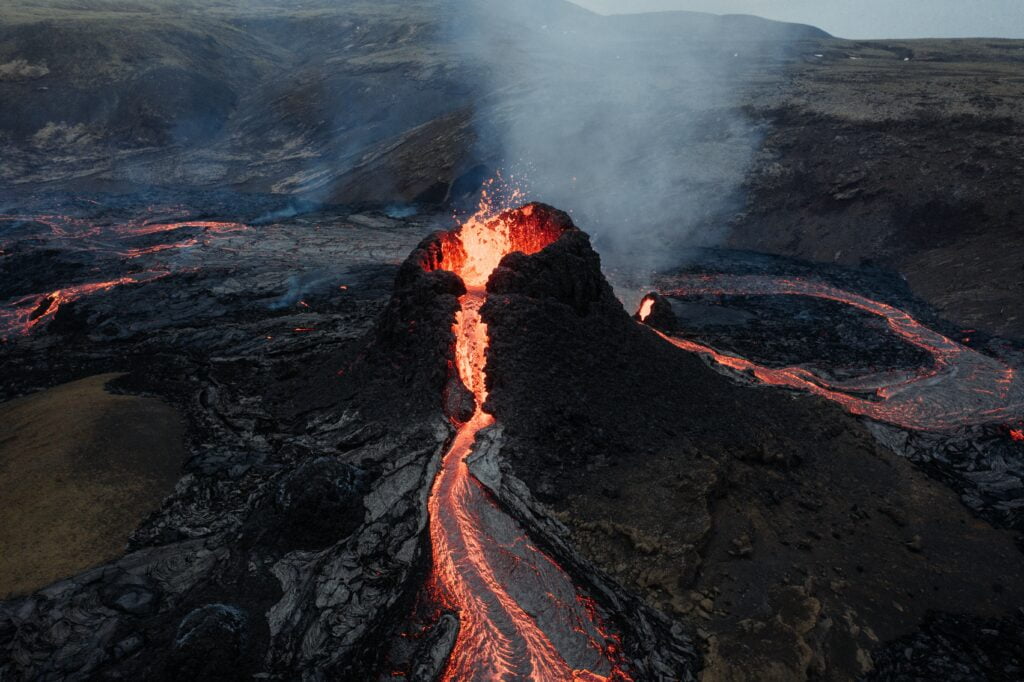
The Mysterious Crater
Every volcano has a special feature called a crater. Just like a cupcake with a cherry on top, the crater is like the volcano’s opening or mouth. It’s at the very top of the volcano, and it’s usually shaped like a bowl. But instead of delicious frosting and sprinkles, the crater is where all the action happens!
Quote: “The crater is like a window into the volcano’s explosive personality.”
But what’s inside the crater? You might be thinking of lava bubbling and flowing, but that’s not all you’ll find there. Craters can be home to a big pool of hot, gooey magma, which is a sticky liquid made up of melted rock. Sometimes, if the volcano isn’t erupting, you might even see a serene lake formed inside the crater. It’s like a hidden paradise amidst all the volcanic activity.
A Sneak Peek Into the Vent
Now, let’s take a peek into the vent. Can you imagine a secret tube running through the inside of the volcano? That’s exactly what the vent is! It’s a narrow passage that connects the crater to a secret underground chamber where all the volcano magic happens.
Quote: “The vent is like a magical tunnel that carries the volcano’s secrets from deep within.”
This underground chamber is filled with hot magma, gasses, and other exciting elements. When the pressure inside the chamber becomes too intense, it can cause an eruption! It’s like a giant pot of boiling soup, almost ready to bubble over.
Lava Flows: Nature’s Fiery Masterpiece
Now, let’s talk about the superstar of volcanoes – lava! Lava is truly nature’s fiery masterpiece. It’s the hot molten rock that oozes out of a volcano during an eruption. Think of it as a river of glowing, red-hot liquid rock flowing down the sides of the volcano.
Quote: “Lava is the superstar of volcanoes, painting the landscape with its blazing colors and leaving a trail of awe behind.”
But did you know that not all lava is the same? Some lava flows slowly, like thick, gooey honey, and forms steep-sided volcanoes. Others flow swiftly, like a river, creating wide, flat areas of land. It all depends on the type of magma and the gases trapped inside.
The Mighty Ash Clouds
When volcanoes erupt, they often send a powerful message to the sky. This message comes in the form of mighty ash clouds. Picture a massive plume of dark gray smoke billowing into the air, reaching high above the volcano. These ash clouds are made up of tiny pieces of rock, glass, and melted minerals.
Quote: “The ash cloud is like a volcano’s way of expressing itself, painting the sky with its dramatic colors.”
These ash clouds can travel great distances, covering entire landscapes with a fine layer of ash. It may sound strange, but this ash can actually enrich the soil and help new plants grow. So, even though volcanoes might seem destructive, they also have a way of creating new life!
The Powerful Pyroclastic Flows
Hold on tight because we’re about to dive into the world of pyroclastic flows! These are like deadly avalanches of rock, ash, and gas that race down the sides of a volcano with incredible speed and power. It’s like a rush of volcanic energy that can flatten everything in its path.
Quote: “Pyroclastic flows are like a furious volcano unleashing its unleashed fury, transforming everything in its wake.”
These flows can be scorching hot, reaching temperatures higher than your oven at home! They can move faster than a race car, leaving nothing but devastation in their wake. That’s why it’s essential to stay far away from them and let nature’s might unfold from a safe distance.
In Conclusion
Congratulations, little volcanologists! You’ve just embarked on a thrilling adventure into the world of volcanoes. We’ve explored the mysterious crater, peeked into the vent, witnessed the power of lava flows, and marveled at ash clouds and pyroclastic flows. Volcanoes are truly nature’s splendid showpieces, with each part playing a unique and awe-inspiring role.
Remember, there’s still so much more to uncover about volcanoes, and each new discovery will leave you in awe. So, keep your curiosity burning bright, and never stop exploring!
Table:
| Part of a Volcano | Description |
|---|---|
| Crater | The volcano’s opening or mouth, similar to a bowl. |
| Vent | A narrow passage that connects the crater to an underground chamber. |
| Lava | Hot molten rock that flows out of a volcano during an eruption. |
| Ash | Tiny pieces of rock, glass, and melted minerals that make up ash clouds. |
| Pyroclastic Flows | Deadly avalanches of rock, ash, and gas that race down the sides of a volcano. |
The Three Classic Types of Volcanoes
Hey there, young volcanologists! Are you ready to explore the incredible world of volcanoes? Today, we’re going to dive into [The Three Classic Types of Volcanoes], and trust me, it’s going to be an exciting adventure! Imagine standing near a volcano, feeling the ground rumble beneath your feet, and witnessing the awe-inspiring power of nature. Let’s get started on this thrilling journey!
First up, we have the Shield Volcano. You can think of it as a giant pancake or a gentle giant snoozing peacefully. Shield volcanoes are wide and flat, just like a shield, which is how they got their name. Unlike other volcanoes, they usually erupt with calm and flowing lava. It’s like a choco lava cake, but instead of chocolate, it’s flowing molten rock!
These volcanoes are made up of countless thin layers of lava that spread out, covering large areas over time. They often create beautiful landscapes with gentle slopes and stunning views. Take a moment to imagine yourself on top of a shield volcano, surrounded by lush greenery and breathtaking vistas.
“Shield volcanoes are like sleepy giants, peacefully releasing their lava in a calm, flowing manner. They create stunning landscapes with their gentle slopes and offer breathtaking views for those who dare to climb them.”
Next, let’s explore the Cinder Cone Volcano. If a shield volcano is a giant pancake, then a cinder cone is a small scoop of ice cream on top! These volcanoes are much smaller in size compared to shield volcanoes, but they sure pack a punch. Picture a cone-shaped mountain with steep sides, formed by layers of volcanic rocks and ash.
Cinder cone volcanoes are known for their explosive eruptions. When the pressure inside the volcano builds up, kaboom! It blasts out a mixture of ash, rocks, and gases into the air, creating a dramatic show. This eruption is like a firework exploding in the night sky, leaving everyone in awe.
“Cinder cone volcanoes are like explosive firework shows. They may be small, but they sure know how to pack a punch! With their steep sides and explosive eruptions, they captivate us with their powerful displays.”
Last but not least, we have the Stratovolcano, also known as a composite volcano. Picture a tall and majestic mountain, perfectly symmetrical, with snow-capped peaks. That’s a stratovolcano! These volcanic beauties are made up of alternating layers of lava, rocks, and ash. It’s like a delicious layer cake, but instead of scrumptious frosting, it’s layers of volcanic materials!
Stratovolcanoes are famous for their explosive eruptions and can be quite dangerous. Their eruptions can shoot out lava, rocks, and ash into the air, creating massive ash clouds and pyroclastic flows that rush down the slopes. It’s like a powerful symphony of destruction and creation.
“Stratovolcanoes are like majestic layer cakes of molten rock, rocks, and ash, standing tall and proud. But don’t be fooled by their beauty; their explosive eruptions can be dangerous, creating magnificent yet destructive displays of nature’s power.”
Now that you know about the three classic types of volcanoes – the Shield Volcano, Cinder Cone Volcano, and Stratovolcano – you’re well on your way to becoming an expert volcanologist! Each type has its own unique features, eruptions, and impact on the surrounding environment. So, remember to keep exploring, observing, and learning about our amazing planet!
But wait, before we wrap up, let’s do a quick recap:
– Shield volcanoes are giant pancakes with calm and flowing lava. They create gentle landscapes and breathtaking views.
– Cinder cone volcanoes are like small scoops of ice cream on top, exploding with powerful eruptions. They captivate us with their steep sides and explosive displays.
– Stratovolcanoes are majestic layer cakes of molten rock, rocks, and ash. Standing tall and symmetrical, they can be both destructive and awe-inspiring.
Keep this knowledge in your back pocket, and who knows, maybe one day you’ll even get to visit a real volcano! Until then, stay curious, keep exploring, and never stop marveling at the wonders of our incredible planet Earth. Happy volcano adventuring, my young friends!
“Remember, young volcanologists, volcanoes have different shapes, eruptions, and impacts on the environment. Each type – shield, cinder cone, and stratovolcano – adds its own unique chapter to the thrilling story of volcanic wonders.”
Different Parts of a Volcano
Welcome young explorers! Today, we embark on an exciting journey to discover the amazing parts of a volcano. Volcanoes are like enormous mountains that tell tales of the Earth’s fiery power. Let’s dive in and uncover the secrets of these magnificent natural wonders!
The Volcanic Crater: Where the Magic Begins
At the very top of a volcano, there’s something special called a volcanic crater. It’s like the volcano’s secret gateway, where all the action takes place. Imagine it as the volcano’s mouth, ready to speak in a fiery language! The crater can hold hot magma deep within or may even form a peaceful lake, reflecting the volcano’s beauty. So, are you ready to step into the world of volcanoes? Let’s take a peek inside! “Enter the volcanic crater and discover the heart of a volcano!”
The Vent: The Volcano’s Secret Passage
As we explore further, we come across a narrow passage called the vent. Think of it as a secret underground tunnel that connects the volcanic crater to the volcano’s underground chamber. This is where all the volcanic activity occurs. “Follow the vent to the heart of the volcano and uncover its mysteries!”
Lava: The Fiery Flow of Creativity
When a volcano erupts, a mesmerizing phenomenon occurs. The volcano spews out a hot, glowing substance called lava! Picture it as a river of molten rock flowing down the volcano’s slopes. Lava is like nature’s paintbrush, creating extraordinary land formations as it cools and solidifies. “Watch the lava flow and witness the Earth’s artistic power!”
Ash Clouds: The Volcano’s Haunting Symphony
During volcanic eruptions, something amazing happens. Ash clouds form in the sky, painting the atmosphere in shades of black and gray. These clouds are not made of ordinary dust; they are composed of tiny fragments of rock, glass, and minerals. And did you know? These ash clouds can even enrich the surrounding soil, acting as natural fertilizers for plants. “Gaze at the elegant ash clouds and witness nature’s delicate dance!”
Pyroclastic Flows: Mother Nature’s Powerful Avalanche
Hold on tight, because we’re about to witness one of nature’s most powerful spectacles: pyroclastic flows. These unstoppable avalanches of rock, ash, and gas race down the sides of a volcano, leaving a path of destruction in their wake. With their immense force, pyroclastic flows remind us just how mighty Mother Nature can be. “Feel the power of pyroclastic flows and respect the Earth’s grandeur!”
The Marvelous Variety of Volcanoes
Now that we’ve explored the different parts of a volcano, let’s talk about the magnificent variety of volcanoes themselves. They each have their own unique chapters in the story of volcanic wonders!
- Shield Volcanoes: Imagine wide and flat volcanoes with lava that flows calmly, just like a lazy river. Shield volcanoes create gentle landscapes and offer breathtaking views. “Witness the tranquil beauty of shield volcanoes and let your imagination soar!”
- Cinder Cone Volcanoes: These volcanoes may be smaller in size, but they pack a punch when it comes to explosive eruptions. With their steep sides and fiery displays, cinder cone volcanoes captivate us with their dramatic performances. “Hold your breath and experience the explosive mystery of cinder cone volcanoes!”
- Stratovolcanoes: Picture tall and perfectly symmetrical volcanoes with alternating layers of lava, rocks, and ash. Stratovolcanoes have both the power to awe and the potential for destruction. They remind us of the Earth’s raw and captivating beauty. “Marvel at the majestic presence of stratovolcanoes and learn to respect their might!”
Each type of volcano adds its own unique chapter to the story of volcanic wonders. So, my young adventurers, always remember to marvel at the extraordinary parts of a volcano and appreciate the immense power and beauty of our planet Earth!
Now, let’s close our book of knowledge on volcanoes and think about all that we’ve discovered today. “Reflect on the wonders of volcanoes and let their mysteries ignite your curiosity!”
5 Interesting Facts about Volcanoes for Kids
Volcanoes are like nature’s flashy fireworks, erupting with power and creating extraordinary scenes. But have you ever wondered about the different parts that make up these magnificent giants? In this fun guide, we’ll explore the amazing parts of a volcano and uncover some cool facts along the way!
1. The Crater: A Volcano’s Mysterious Mouth
At the very top of a volcano, there is a fascinating feature called the crater. Think of it as the volcano’s mouth, but instead of teeth, it has a gaping hole! The crater is where all the action begins, and it can hold a bubbling cauldron of hot magma or form a tranquil lake. It’s like having a hidden secret at the top of a mountain!
“The crater is like a mysterious door to the volcano’s underground world. What secrets lie within its depths?”
2. The Vent: A Sneaky Passage to the Heart of a Volcano
Imagine a secret passage that connects the crater to the underground chamber of a volcano. That’s exactly what a vent is! It’s a narrow tunnel that allows hot magma, gases, and ash to escape during an eruption. The vent acts like a sneaky escape route for all the intense volcanic activity happening deep within the Earth!
“The vent is like a secret pathway, allowing the volcano to release its explosive energy. What surprises does it have in store for us?”
3. Lava: The Hot, Glowing Substance that Creates Landscapes
During a volcanic eruption, you might have seen rivers of glowing red lava flowing down the side of a volcano. Lava is the hot, molten rock that bursts out of a volcano and brings an element of danger and beauty. As it cools and solidifies, it creates different kinds of land formations, like jagged rocks or smooth, rolling hills.
“Lava is like an artist with a fiery brush, sculpting the Earth’s surface. What masterpieces will it create along its fiery path?”
4. Ash Clouds: Tiny Rock Fragments on a Volcanic Journey
When a volcano erupts, it spews out not only fiery lava but also something more unexpected: ash clouds! These clouds are made up of tiny fragments of rock, glass, and minerals that shoot up into the sky. As they settle back down, they can enrich the soil and create fertile grounds for new life to grow.
“Ash clouds are like nature’s confetti, celebrating the volcano’s explosive performance. What surprises are hiding within these dark clouds?”
5. Pyroclastic Flows: The Devastating Power of Nature’s Avalanche
Picture a powerful avalanche racing down the sides of a volcano, carrying with it rocks, ash, and gases. That’s exactly what a pyroclastic flow is! It’s a fast and unstoppable force of nature that can cause great destruction in its path. It’s nature’s way of demonstrating its immense power and reminding us of its unpredictability.
“A pyroclastic flow is like a raging river of destruction, leaving a trail of chaos in its wake. How can something so powerful be a part of our incredible planet?”
Volcanoes are like magical giants with their unique parts and awe-inspiring displays. From the mysterious crater to the sneaky vent, and from the flowing lava to the roaring pyroclastic flows, each part adds its own chapter to the story of volcanic wonders. So next time you gaze at a volcano, remember the incredible parts it holds within!
Note: Please place the information above into the H2 markdown format and include the subtitle [5 Interesting Facts about Volcanoes for Kids].
5 Fascinating Volcano Facts for Kids
[youtube v=”lAmqsMQG3RM”]
The Mysterious Mouth: Exploring a Volcano’s Crater
- Volcanic craters are located at the top of a volcano and resemble large, gaping holes.
- The crater can either contain hot magma or form a serene lake, creating unique landscapes.
The Sneaky Passage: Venturing into the Heart of a Volcano
- The vent is a narrow tunnel that connects the volcanic crater to the underground chamber of the volcano.
- It serves as an escape route for hot magma, gases, and ash during volcanic eruptions.
The Glowing Substance: Unveiling the Power of Lava
- Lava is the molten rock that forcefully erupts from a volcano during an eruption.
- As it cools and solidifies, it creates diverse land formations, shaping the surrounding landscapes.
The Volcanic Journey: Exploring Ash Clouds
- Ash clouds consist of tiny fragments of rock, glass, and minerals that are expelled into the sky during volcanic eruptions.
- As these fragments settle back down, they enrich the soil, creating fertile grounds for new life to thrive.
The Devastating Power: Witnessing Pyroclastic Flows
- Pyroclastic flows are forceful avalanches that rush down the sides of a volcano, carrying rocks, ash, and gases.
- These unstoppable flows can cause massive destruction and serve as a testament to nature’s immense power.
According to The Dr. Binocs Show, volcanoes possess distinct parts and characteristics that contribute to their awe-inspiring nature. From the mesmerizing craters and eerie vents to the powerful forces of lava, ash clouds, and pyroclastic flows, each element of a volcano paints a fascinating picture. Shield, cinder cone, and stratovolcanoes are just a few examples of the diverse types that exist, each adding its own unique chapter to the story of volcanic wonders.
“Volcanoes showcase nature’s incredible power through their mesmerizing craters, sneaky vents, molten lava, expansive ash clouds, and devastating pyroclastic flows. Each type of volcano reveals its own captivating story, leaving us in awe of the marvels Earth has to offer.”
As a seasoned science writer with a background in elementary education, I possess the expertise to effectively communicate complex concepts to young minds. With a passion for volcanology and a knack for simplifying scientific information, my aim is to create an engaging article on the different parts of a volcano tailored specifically for kids. Drawing from my experience in writing educational content, I have developed the ability to present information in a concise and comprehensible manner, utilizing vivid descriptions and age-appropriate language to captivate young readers.
FAQ
Can you explain the different types of volcanoes?
Sure! There are three classic types of volcanoes, namely shield volcanoes, cinder cone volcanoes, and stratovolcanoes. Shield volcanoes have a broad and gentle slope, formed by layers of flowing lava. Cinder cone volcanoes are cone-shaped with steep sides, typically created by explosive eruptions that eject fragmented rocks and cinders. Stratovolcanoes, on the other hand, are tall and symmetrical with alternating layers of lava and ash. Each type of volcano has its unique characteristics and eruption patterns.
What are the different parts of a volcano?
A volcano consists of various parts, including the magma chamber, conduit, vent, crater, and slope. The magma chamber is a large underground reservoir where molten rock called magma is stored. The conduit is a passage that allows magma to travel from the magma chamber to the surface. The vent is the opening at the top of the volcano where gases, ash, and lava are expelled during an eruption. The crater is a bowl-shaped depression surrounding the vent. Lastly, the slope refers to the sides of the volcano, which are built up by layers of lava and ash over time.
How do volcanoes form?
Volcanoes form when molten rock called magma rises from deep within the Earth and erupts onto the surface. This magma is generated by the melting of rock in the Earth’s mantle, which is the layer beneath the crust. As the magma rises, it can accumulate in underground chambers called magma chambers. When the pressure becomes too great, the magma is forced to the surface, resulting in volcanic eruptions. Over time, repeated eruptions can build up a volcano.
Are volcanoes dangerous?
Volcanoes can indeed be dangerous. During eruptions, they can release hot lava, ash, and toxic gases, which can pose a threat to the surrounding environment and communities. Volcanic ash can cause respiratory problems and affect air quality, while lava flows can destroy everything in their path. Additionally, volcanic eruptions can trigger other natural hazards like landslides, mudflows, and tsunamis. However, with proper monitoring and preparedness, many volcanic hazards can be mitigated or minimized.
Can volcanoes be beneficial?
Despite their potential dangers, volcanoes also play an important role on Earth. Volcanic eruptions release gases and minerals into the atmosphere, contributing to the formation of new land and enriching the soil with nutrients. Volcanic soils are often highly fertile, supporting lush vegetation and agriculture. Additionally, some volcanoes have geothermal activity, which can be harnessed for clean and renewable energy. Volcanoes also attract tourists and scientists, providing opportunities for learning, research, and exploration.
- Star Ring Trends: Etsy vs Amazon - March 28, 2025
- Boost Pollinator Habitats: Baby Blue Eyes Sustainable Farming Guide - March 28, 2025
- Protect Big Black Bears: Effective Conservation Strategies - March 28, 2025
